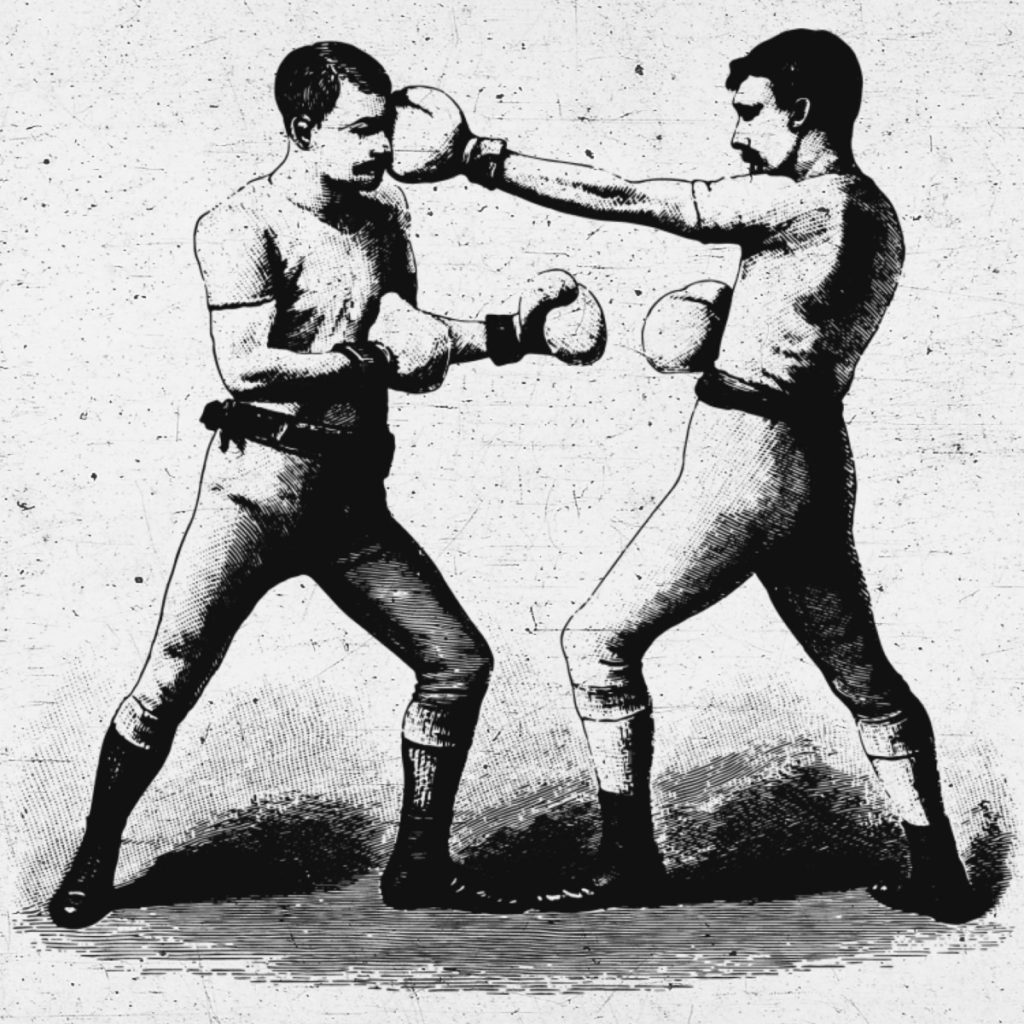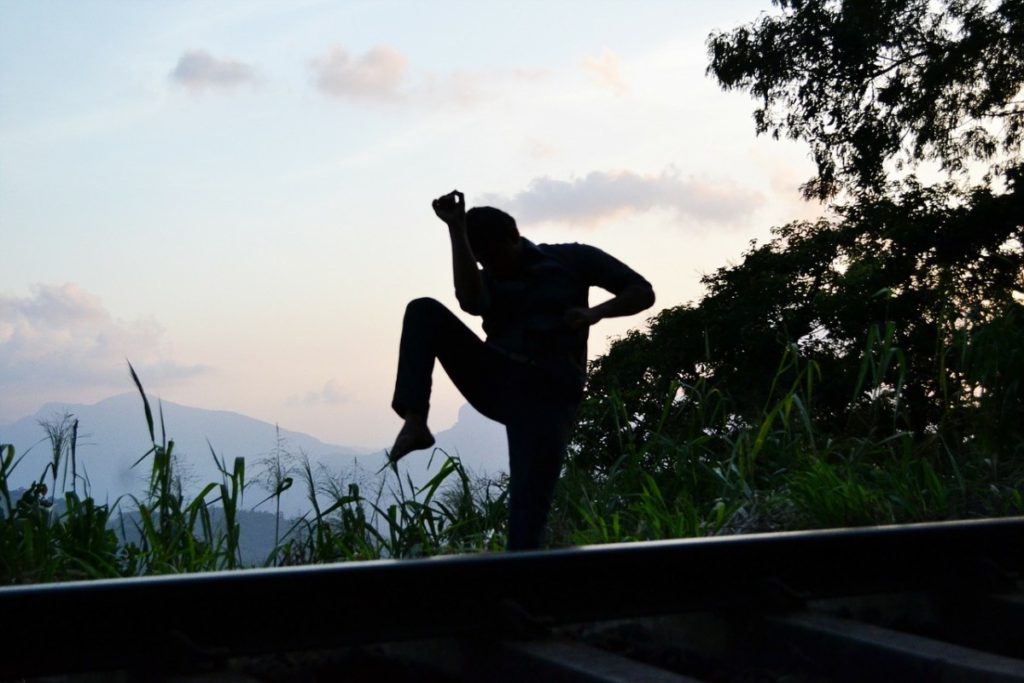As with any martial artist who is active online, I occasionally find myself in spirited debates with others on certain topics. Most recently, it was the argument centered around “Is Muay Thai better than boxing?”. It’s a difficult question that requires some deep analysis.
A boxer is limited to just using his hands, and only striking to the upper half of the body. Whereas a Muay Thai fighter can strike with hands, feet, knees, and elbows (hence the name, “The art of 8 limbs”). This gives a Muay Thai fighter six more weapons than a boxer and no matter where the fight happens, the Thai fighter is better prepared to meet it.
That said, if you think boxing is down for the count, then you’re dead wrong. In fact, a Thai boxer has a lot to learn from his Western cousin and he would do well to make a study of his methods.
Weigh In
First, some fast facts about these two impressive styles.
Western Boxing:

While it can be argued that competitive fist fighting is as old as humanity, what we think of when we say “boxing” dates back to roughly the 17th century Britain where it was sometimes referred to as bare-knuckle boxing or “Prize fighting”. And while this could be called the birth of modern boxing, it looked very different. There were no real rules, no referee, and no weight divisions. It wasn’t until the addition of London Prize Ring Rules that the use of kicking, butting, and gouging were banned.
Fast forward to 1867 and you find the implementation of the Marquis of Queensberry rules. This formalized much of what we see in modern boxing including the size of the ring, the duration of each round, the famous 10-count for a knock out, etc.
Muay Thai:

Emerging out of an earlier style known as Muay Boran, modern Muay Thai can be traced back to the 19th century when the king of Siam (present day Thailand), Chulalongkorn held an exhibition during the funeral of his son. There, fighters from all over Siam were invited to demonstrate their art. So impressed with three fighters in particular, he awarded them recognition. This was the beginning of the Lopburi, Korat, and Chaiya regional fighting styles.
In the beginning of the 20th century, British boxing was added to the fighting curriculum taught at the Suan Kulap College after which was the first written use of the name “Muay Thai”.
On the Streets
When evaluating any style’s ability to deal with violence in the street, it’s important to draw a line between the two main types of violence, social and antisocial. Each of these are distinct and will determine how effective boxing and Muay Thai are against it.
Social Violence
Social violence is the drunk guy in a bar who starts something because you bumped into him, the jealous boyfriend who doesn’t like you dancing with his girl, or chest-thumping displays between opposing sports hooligans that escalate to actual violence.
Both boxing and Muay Thai have a strong advantage against both trained and untrained aggressors in a social violence scenario. Due to their emphasis on full-contact sparring, exponents will not as easily fall victim to the shock of actually being hit. And both have defensive strategies which an aggressor will have difficulty overcoming.
Born out of its tough training, a Western boxer has a unique advantage in this situation, over Muay Thai, owing to the style’s emphasis on footwork and defense to avoid getting hurt.
Of course, a Thai fighter also has specific advantages, especially in tight spaces, due to Muay Thai’s use of elbows and knees, and clinch techniques.
It’s not all good news, though. Both boxing and Muay Thai suffer from a number of weaknesses, stemming mostly from their nature as a sport. A sport fighter like this is trained to fight only one person at a time and doesn’t naturally think about watching for a second opponent (exception below). A sport fighter is also never trained to deal with weapons and is taught to stop when his opponent falls to the ground. These can be critical mistakes under the right circumstances.
It’s a tough call to say which one would be better in this situation. I’m going to split this one down the middle and say it could go either way and likely would depend on the individual fighter.
Antisocial Violence
Anti-social violence is a very different animal. This is the mugger. The rapist. Here, there is rarely an open sizing up (though there is often a pre-violence “interview”). The anti-social aggressor might work alone or in a small group. He is commonly armed. He doesn’t want to be seen committing his crime. Doesn’t want glory or recognition for it. All of this means that there is very little lead up before violence is committed (or threatened) and ambush is a common attack method.
As already said, ambush is often the choice method of attack and, thus, the defender has almost no chance to employ any of his fighting skills. The skills required are ones that aren’t taught to either boxers or Thai fighters: environmental and behavioral assessment.
- Where are the points of concealment?
- How are the people around me dressed? Does anyone stand out?
- How are the people around me acting? Does anyone stand out?
- Is someone making too much eye contact with me? Too little?
- Does this area have multiple points of entry/exit?
- Etc.
These are skills that can be added to a sport fighter’s tool kit, but they aren’t taught as part of their style and that leaves them just as vulnerable to an ambush as a completely untrained individual.
But let’s presume that the violence has commenced and the initial surprise-attack has failed. Now the defender can act and employ his skills. This is where I’m going to give the slight advantage to Muay Thai because of its greater versatility.
Head to Head
So what about a fight between a boxer and a Thai fighter? Well there are hundreds of examples online and after viewing enough of them I am comfortable saying that the winner is going to be determined by whose rules they’re fighting under. Under Muay Thai rules, the Thai boxer is going to win 9 out of 10 times. He is in his element, able to employ all of his limbs and skills against an opponent who has been trained to only rely on his hands. And even if the boxer decided to chance a kick, Thai fighters are famous for catching legs and countering with a sweep or a strike.
Under a Western boxer’s rule set, the boxer holds the advantage, though by a lesser margin than the previous. The Thai boxer is skilled with his hands, but is going to soon see that a boxer’s limitation has given way to specialization. The Muay Thai fighter is also going to witness the superior footwork that boxing affords, allowing the Western opponent to use angles and create openings.
How about under no rules (except that they had to remain standing)? This one goes to Muay Thai. Even if he’s never seen a Western boxer before, he’s going to quickly see that a boxer’s weakness is his lower half. Drilling the boxer’s legs and knees with devastating kicks, and delivering knees and sweeps from the clinch will, in most cases, give the Thai boxer a sure victory.
Final Round
While boxing is a powerful fighting style, Muay Thai holds several key advantages. The use of not only fists, but elbows and knees makes Muay Thai more versatile than Western boxing. And employing throws and sweeps in the clinch gives it the basics of grappling that is completely missing from a boxer’s tool kit.
